By Señior Tech from the April 2018 Edition
I can remember when we got our first television, it was black and white and we didn’t need a remote control as there were only 2 channels available to select. There was no cable or satellite then, so the antenna on the TV top was used to receive the over the air signals. To get a good picture, the antenna had to be placed away from metal objects that could cause interference of the signal. If the TV top antenna could not adequately receive a signal, a rooftop antenna would need to be installed to capture the distant VHF signal (very high frequency). Television sets used a cathode-ray tube (the cathode-ray tube focused electron beams to trace lines across a phosphor-coated surface) to display the picture.
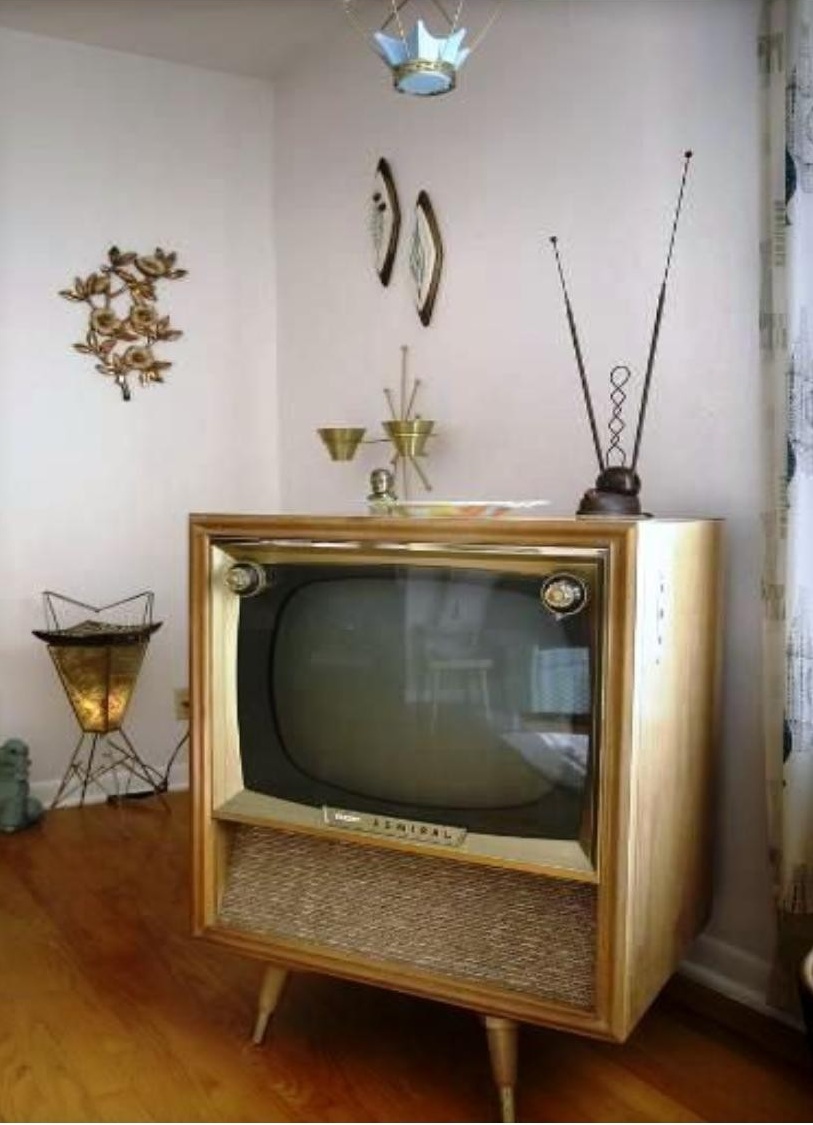
Resolution of the picture was 525 lines or in today’s techno lingo 480i. It was an analogue system which meant that the picture quality degraded the farther the antenna was away from the broadcaster. It was not uncommon to see someone holding onto the antenna and standing on one leg to get a better picture. Screen size was limited to 27-30”; a large screen in front meant the length of the cabinet needed to be increased to facilitate the longer CRT (cathode-ray tube). Therefore a 60” screen would effectively take up half the room.
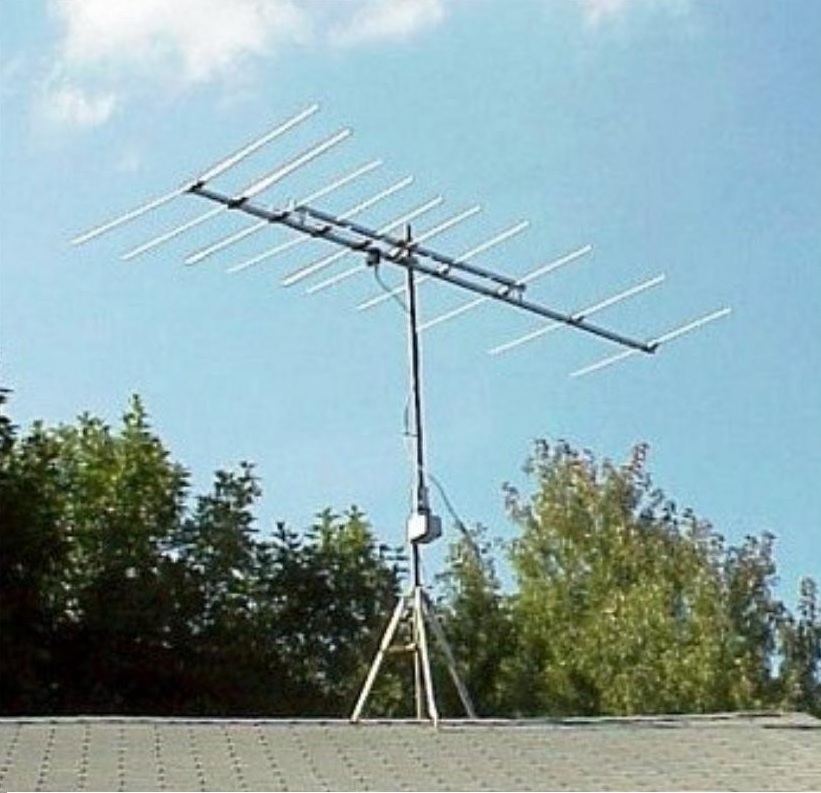
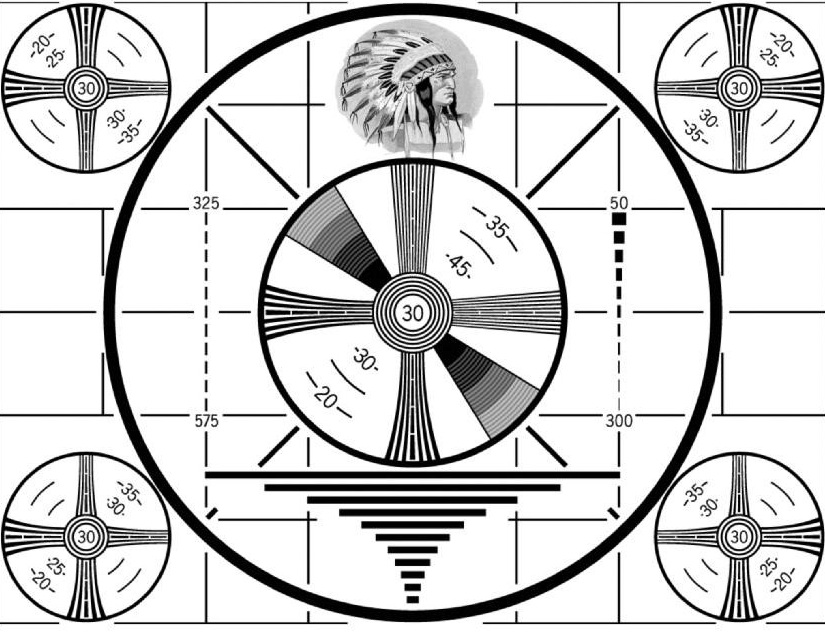
And if you can remember the following screen, I’ll say no more.Our family telephone had a rotary dialer, and if you tried to dial faster than the switching station could read the dial data, it would give a fast-busy signal indicating the call could not be connected. The telephone was also hardwired into the wall and privacy was difficult as the cord was only 6 feet long. The telephone belonged to the phone company and part of the cost was the rental of that phone.
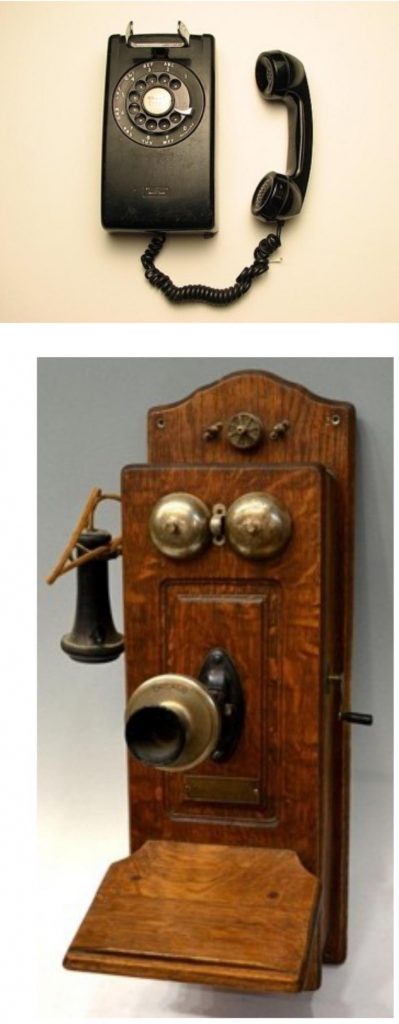
But we were lucky. When we visited my cousins on their farm, they had a party line. In simple terms, 3-4 farm families shared one line and their telephone service was handled by an opera-tor. If they wanted to make a telephone call, they would give the number to the operator who would then route their call. An incoming call was signified by several ring patterns. Each member of the party line was assigned a unique number of rings that would indicate that the call was for them. Privacy was an issue as anyone could listen to a call and the service only worked when there was an operator at the local switching station.
Radio was more important back then than it is now. The invention of transistors, made it possible to carry a portable device in your pocket and listen to music, news and sports. I can remember sitting at my desk in grade 5 listening to the world series; the earphone wire running up my shirt sleeve to my ear as I sat apparently intent on the teacher’s lessons. In the US and Canada, amplitude modulation, or AM as it was more commonly known, was the frequency band that radios were tuned to receive. Although frequency modulation was around, FM broadcasts never became popular until the 1970’s.
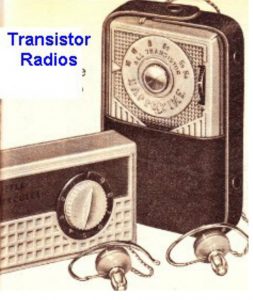
In the late 1950’s, 78 rpm records were still being pressed, but a change occurred and 45 rpm singles and 33 1/3 rpm LP’s (long play) became the mainstream method of musical entertainment at home. Manufacturers made huge high fidelity cabinets (Hi-Fi) that included a turntable, amplifier, radio tuner and speakers. This was slated to be the total home musical entertainment system; you could play your own music records (78s, LPs, 45s) or listen to AM or FM broadcasts in the comfort of your home.
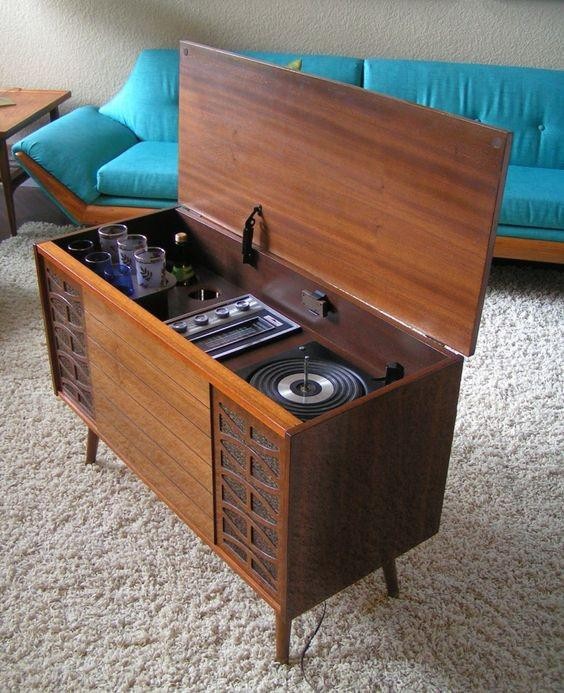
Remember flash bulbs? To take a photo, cameras at the time used film (black and white or colour) to capture the images. Photographic film is made of a strip of transparent plastic coated on one side. They had a gelatin emulsion containing microscopically small light-sensitive silver halide crystals. Exposed film was sent to a film laboratory for processing. Film rolls came in 12, 24 or 36 exposures.
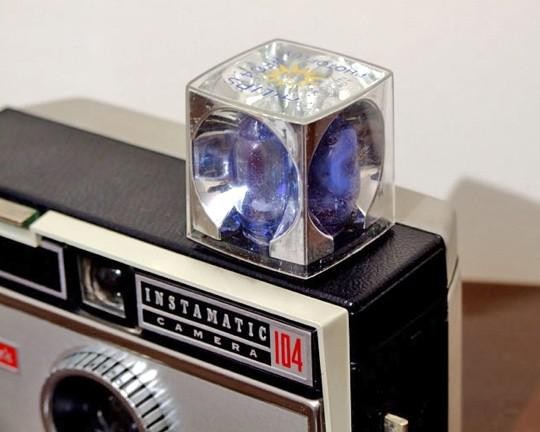
The film laboratory would develop the film and then either re-turn slides or prints. This was an expensive process and people were selective with the number of photos they took. A roll of film could take months to fill up and the results may or may not have been what the photographer expected; ie. heads out of frame, or over/under exposed photos. In low light situations, flash bulbs (magnesium filaments were contained in bulbs filled with oxygen gas, and electrically ignited by a contact in the camera shutter) were used.
These were a single use flash and added to the cost of the finished photograph. There were no One Hour photofinishers, so a roll of film dropped off to be processed would typically be ready for pick-up in a week.
“That’s one small step for man, one giant leap for mankind.” Those words, uttered by Neil Armstrong on July 20, 1969 as he took that famous first step on the moon surface, signaled the end of the analogue era and propelled technology towards the digital age. As most of the world watched this event occur on their home televisions, few of those people would have imagined 100” flat-screen televisions, video telephone calls on their pocket phones, music on demand, online banking, photos with-out film, and thousands of other technological marvels that have complicated or made life better for mankind.
In the span of half a century, technology advances have made it possible for us to carry a telephone, TV, audio music player, radio and camera with flash in our pockets or purses. These devices have additional functionality such as GPS and always on internet; to allow research on almost any topic, instantly. These abilities were not possible 50 years ago.
If you only think about the changes to photography these past 50 years, it is amazing. Photo results are immediate and consequently people have become better photographers. Since there are no additional costs to delete and retake a photo, they can reframe and retake a better memory. This may not seem like a big thing but, remember the Kodak Company, it was one of the largest Fortune 500 companies 50 years ago. Kodak no longer exists due to the digital photo revolution.
Download the full edition or view it online
—
Señior Tech is a technology addict that loves to share tips. He lives in Manzanillo full time and helps keep the community up on the latest tech tricks and toys.



